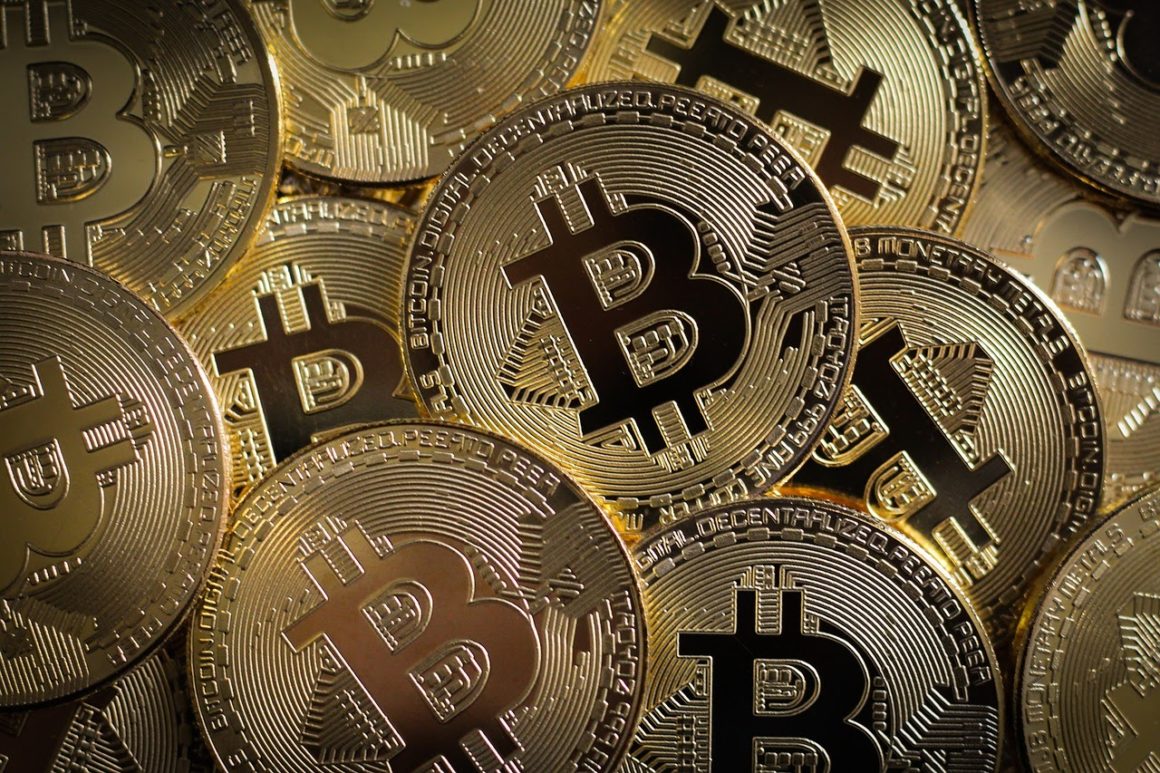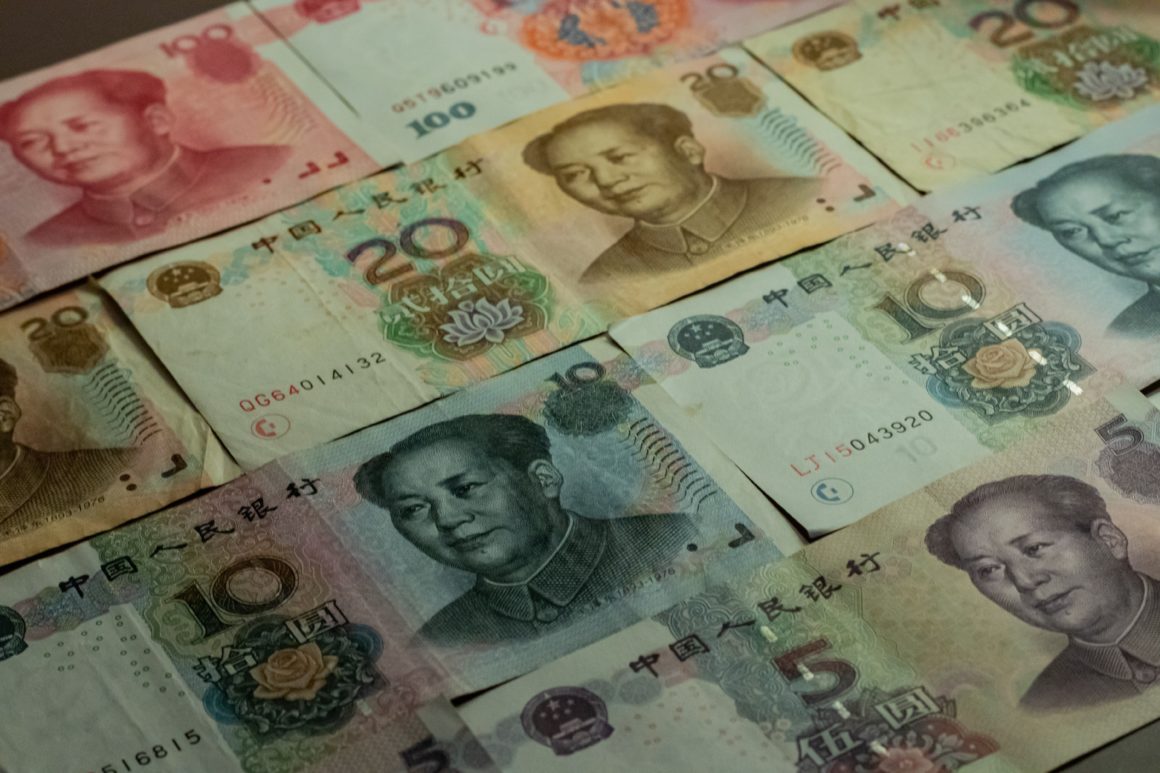In this issue
- BTC prices rally to new heights
- Bitcoin Cash hard forks into BCH and Bitcoin ABC
- Tron passes up congested Ethereum in transaction volume
- Ethereum 2.0 pre-launch hits turbulence
- China taps Lakala to build out DCEP digital currency’s payment services
- Funding spotlight: Fintech in Kong Kong and Indonesia
From the Editor’s Desk
Dear Reader,
What happens when there is no consensus, and governance breaks down into two distinct groups that instead of working together, decide to split and go their own separate ways?
That’s exactly what happened in the world of cryptocurrency and blockchain this past week. Bitcoin Cash (which separated from Bitcoin back in August 2017) has forked again, with a faction called Bitcoin ABC splitting off Bitcoin Cash. But if you were to have sat with the rhetorical question I started this missive with, really it could have been a commentary on what we’re experiencing politically around the world. In this way, I think that is the truest challenge of our human nature.
What happens when two distinct points of view can’t agree? In blockchain, those lined up behind the two tribes split. In the case of Bitcoin Cash and Bitcoin ABC (the group breaking away via hard fork of Bitcoin Cash), the market has decided. The miners (akin to the electorate) decided to stay with Bitcoin Cash, voting with their work. The majority of miners continued to provide hash power to Bitcoin Cash and continued doing the important job of adding transaction records upon which that blockchain protocol is based. Bitcoin ABC failed to win the miners over.
It reminds me of something most of us learned as children from that old Aesop fable about a bundle of sticks: the importance of cooperation. That we are stronger together. Being divided exposes weaknesses and presents more opportunities for attack, with fewer allies to help overcome obstacles. It underscores the adage: “United we stand, divided we fall.” In blockchain, or otherwise.
Until the next time,
Angie Lau
Founder and Editor-in-Chief
Forkast.News and Decrypt are inviting you to Around the Campfire, an online salon with crypto’s biggest names. This week features an exclusive discussion with the Filecoin team about their launch, the roadmap ahead and the future of decentralized storage.
- 8 a.m. HKT, Friday Nov. 20 (4 p.m. PST, Thursday Nov. 19)
- Sign up for the online discussion here.
1. Bitcoin prices surge to new heights

By the numbers: Bitcoin — over 5,000% increase in Google search volume.
Bitcoin crossed the US$18,000 mark for the first time in three years and is currently trading at $17,770 at press time. According to a Citibank note to institutional clients titled, “Bitcoin: 21st Century Gold” that was shared on social media by community members, managing director Thomas Fitzpatrick is predicting bitcoin prices to reach US$318,000 by the end of 2021.
- Billionaire hedge fund manager Ray Dalio — after suggesting earlier that digital currencies would not “succeed in the way people hope they would” — has shifted toward a lighter stance, challenging the public to change his mind about bitcoin. @RayDalio: “I might be missing something about Bitcoin so I’d love to be corrected.”
- Meanwhile, a popular Twitter poll started by Game of Thrones star Maisie Williams showed the community sentiment on bitcoin. “Should I go long on bitcoin?” Williams asked on social media. Among 902,304 total votes, 53.4% advised “no,” while 46.6% said “yes.”
- @novogratz (Mike Novogratz): “I bought more $BTC last night at 15800. It’s going to 20k and the. To 65 k. The network effect has taken over. I see tons of new buyers and there is very little supply. It’s an easier trade here that at 11k. So YES, buy it.”
- @elonmusk (Elon Musk): “Toss a bitcoin to ur Witcher”
Forkast.Insights | What does it mean?
Predicting that bitcoin will skyrocket to six-figure valuations is a hobby as old as time. John McAfee perfected the craft, but he was far from the only one. So much of crypto Twitter would love to chime in with their large-figured forecasts to build positive sentiment around the coin and push prices to the moon.
As bitcoin moves further to becoming an institutional-grade asset versus being a speculative commodity and a not-very-useful currency, it’s going to get more analyst attention from big name financial institutions, which in turn generates headlines such as this. But that doesn’t mean the methodology is valid. Citibank’s analysis, which points to bitcoin hitting US$318,000, is based on parallels to the gold market from the 1970s to the present. Gold, as the report notes, was constricted around the $30 mark until it was officially de-linked from the U.S. dollar in 1971 and became a popular hedge against inflation in the 1980s free of a tie to any currency.
But can all of this be applied to bitcoin? In some ways, yes. We will likely see a long run in prices as the market hunts for an alternative asset class with the likely weakening of the U.S. dollar due to unprecedented debt loads and deficits as recovery from Covid-19 defines the early 2020s. Should we be expecting a 20-times multiplier on current prices? Not likely. Gold’s rally was because of a tectonic shift in the ability to convert gold to dollars. There’s nothing like that in store for cryptocurrency.
2. Bitcoin Cash hard forks into BCH and Bitcoin ABC

By the numbers: Bitcoin Cash ABC — over 5,000% increase in Google search volume.
Bitcoin Cash (BCH) experienced its second hard fork into Bitcoin Cash and Bitcoin ABC after the BCH community rejected a proposed update from developer Amaury Sechet’s group, Bitcoin Cash ABC. Sechet, the self-described “benevolent dictator” of Bitcoin ABC, proposed 8% of mining rewards be redistributed to the development team.
- In November 2018, BCH went through another hard fork that split BCH into two different block sizes. BCH maintained a 32 MB block size, while the iteration of Craig Wright — the controversial figures who claims to be the real Satoshi Nakamoto — Bitcoin Satoshi Vision (Bitcoin SV), increased the block size to 128 MB.
- Bitcoin Cash was forked out of the original bitcoin blockchain on block 478,558 in August, 2017. Members of the bitcoin community led by “Bitcoin Jesus” Roger Ver believed that block size needed to be increased for bitcoin to act as a medium of exchange, rather than a store of value. Owners received a 1 BTC:1 BCH exchange rate. Today, 1 BTC is trading just under US$18,158.35 while 1 BCH is just over US$250.
Forkast.Insights | What does it mean?
The fork of Bitcoin Cash to create Bitcoin Cash ABC — its second after the creation of Bitcoin Satoshi Vision in 2018 — is best described as contentious, with a debate centered around the proposed “infrastructure funding plan” (IFP), which taxes miners at 8%, with the proceeds earmarked for future development of the protocol. At the same time, Bitcoin Cash ABC proponents argued that there was a pathway forward for Bitcoin Cash with creating larger block sizes, but this development costs money and hence the need for the tax. Opponents of the idea argued that this would increase centralization and was antithetical to the idea of cryptocurrency in the first place.
Battle lines were drawn between Bitcoin Cash Node (BCHN) and Bitcoin Cash ABC (BCHA). Given Bitcoin Cash Node’s associations with Craig Wright — who lives in the fiction of being Satoshi — some big names have come out swinging against it. Vitalik Buterin called on team BCH to not give in to pressure and stand their ground, even if it meant a fracture in the community, while Bitmain’s Jihan Wu has called Wright a “fake” and encouraged both sides to work things out instead of going through with a fork.
But despite all of this, BCHA seems to be on the losing side of history. According to CoinDance, the ABC team simply can’t muster the hash power that the other side can. The fact that BCHN has pulled so far ahead in terms of support from miners shows the idea of an 8% tax simply wasn’t a winning proposition — despite the involvement of Craig Wright on the other side.
3. Tron passes up Ethereum

By the numbers: Tron — over 5,000% increase in Google search volume.
Tron’s total transaction volume in Q3 increased by 2,725% when compared to Q2 of this year. According to the dapps analysis company DappRadar, This Q3 increase was enough for Tron to edge out Ethereum in total transaction volume for the month of October. Tron generated US$280 million while Ethereum generated $159 million in transaction volume.
- Tron also saw a higher increase in the number of daily wallets in October when compared to Ethereum.
- Tron’s daily active wallets increased by 248% while Ethereum saw a 10% increase. However, Tron’s 248% increase records 4,135 daily active wallets, while Ethereum’s 10% increase records 58,643 daily active wallets.
Forkast.Insights | What does it mean?
Is the cryptocurrency world now taking a shine to Tron and its controversial founder, Justin Sun?
Tron’s spike in total transaction volume is largely because of Ethereum’s congestion and DeFi protocols looking for a new temporary home. During this quarter, a number of DeFi platforms were launched on Tron, including the eponymous Sun token, which has over US$200 million staked, or the JUST family of protocols that lets anyone develop a turnkey solution for DeFi, as well as the Decentralized Exchange JustSwap.
Despite the bad press and many controversies involving Tron’s founder Sun, Tron is a well established blockchain with plenty of liquidity. It’s in a perfect place to catch the spillover from Ethereum for industry players that don’t want to bet on an unestablished startup chain. This isn’t in any way supposed to canonize Tron as something other than what it is, but rather a matter of Tron being in the right place at the right time.
4. Ethereum hits pre-launch snafus

By the numbers: Ethereum — over 5,000% increase in Google search volume.
Ethereum is experiencing turbulence leading up to the launch of phase 0 of Ethereum 2 — which is currently scheduled for December 1 if conditions are met. Ethereum’s major infrastructure provider Infura experienced a service outage, which brought down popular dapps such as MakerDAO and Metamask.
- Community investigations discovered an inadvertent hard fork of Ethereum, which led to two split Ethereum chains from block 11,234,873. Infura revealed that a consensus bug at block 11,234,873 caused the outage.
- Ethereum’s outage did not slow down DeFi. After plunging below US$13 billion after the closing of Uniswap’s token rewards, DeFi’s surge continued, now surpassing US$13.5 billion in total value locked behind the resurgence of SushiSwap.
- 100,224 ETH has been staked by just 16,384 validators so far, as of press time. The network needs 424,064 ETH by November 24 to reach its required threshold for launch on Dec. 1. If the target is not met seven days before the launch date, the date would be postponed to seven days after the target has been met.
Forkast.Insights | What does it mean?
A platform that’s supposed to be the “world’s computer” became much less useful overnight because a centralized software infrastructure provider failed.
Ouch! Take that, blockchain maximalists.
As much as people like to tout the decentralized nature of Ethereum, the reality is, things like dApps and ERC-20 tokens rely on infrastructure providers like Infura to act as a bridge between the blockchain and their apps. Infura’s application programming interface (API) allows blockchain apps to write to the blockchain. Everything from price feeds to token withdrawals were impacted.
Decentralized Ethereum relies on centralized pipes that act as a layer between the blockchain and software. Of course, Infura doesn’t have a monopoly on this; there are other providers. But the problem is, there are points of failure. So what sort of decentralization exists if you are reliant on one of three major infrastructure providers? Of course, any large institution such as an exchange would have multiple providers — but it seems like many were still adversely impacted regardless.
There’s no obvious solution to this, as there will only be a handful of providers of that scale, but it’s something to think about when extolling the virtues of blockchain’s ability to decentralize.
5. In China: Lakala tapped for DCEP digital yuan’s payment system

The Digital Currency Research Institute, a unit of People’s Bank of China, signed a pact with Lakala Payment, a third party payment company in China, to further develop the payment functions of the new DCEP digital yuan.
- According to Yicai, the elite financial publication in China, Lakala will innovate in the retail payment sector of the DCEP e-RMB and also help PBOC build the digital yuan’s payment ecosystem.
- Established in 2015, Lakala has been a listed company in Shenzhen Stock Exchange since 2019. Lakala’s main products are point-of-service terminals and card swipers. It also has created a one-stop payment software that enables small and medium enterprises, especially retailers, to collect money easily. As of 2019, Lakala has served more than 21 million retailers, according to its official website.
Forkast.Insights | What does it mean?
Any sort of payments will require a payment processor, the entity to move funds from the customer’s bank to the merchant, and Lakala Payment group is no stranger to that. In fact, the firm was one of the first credit card payment processors in China with a network of 30,000 terminals across 38 cities by the end of 2009.
But then it got disrupted. Once smartphones became popular in 2012 and 2013 and WeChat and AliPay became payment giants, card-based transactions became, for many, a thing of the past. WeChat and Alipay were disintermediaries for the payments sector as they handled the payment processing business themselves — everything was done on the app, both the seller and merchant’s accounts exist on the platform. Firms like Lakala found themselves pushed to the sidelines, without a market.
China’s new DCEP digital currency is now changing this dynamic. With DCEP, you still need to have third parties handle the process of transferring the yuan. Unlike the WeChat and AliPay era, there are once again multiple parties involved: the customer’s bank, the merchant’s bank, and the path between them.
One of China’s goals for the DCEP digital yuan may be to wrestle control away from the nation’s current mobile phone payments duopoly so that no private company will have such singular influence and power over the nation’s money supply. This is where firms like Lakala can be useful.
6. Funding spotlight: fintech in Hong Kong and Indonesia
Coherent — Hong Kong, Series A, US$14 million
Hong Kong’s Coherent, an insurance technology startup, closed a $14 million Series A funding round led by Cathay Innovation, an “early growth venture capital firm” in San Francisco. Cathay Innovation is a subsidiary of the French-headquartered venture capital firm Cathay Capital. Coherent provides insurance digitization tools for businesses as well as customer-focused insurance sales platforms. The company stated that the funds would go into talent expansion in Hong Kong, Singapore and China as well as create new teams in Japan and the United States.
LinkAja — Indonesia, Series B, US$100 million
LinkAja, a Indonesian state-owned and state-funded digital wallet app and payment platform, closed a $100 million funding round led by Singaporean ridesharing, courier and food delivery superapp Grab. Other investors included Jakarta’s BRI Ventures, which invested in its earlier Series A round, which was a result of state takeover. In a news release, the company explained that funding was to go toward expansion opportunities as well as research and development.
Forkast.Insights | What does it mean?
This week we have two different stories of FinTech. First, a bet on the continued rise of insurtech in rich-world Asia. In the U.S., investors have deployed $8.5 billion in capital into the sector. Within Asia, that number is closer to US$6 billion. As the economy matures in the region, this sector is bound to continue to grow. Payments is another growth story and a frequent theme for VCs. Cross-border transactions and trade have often been the pathway to wealth for developing countries, and in fragmented Asia there is a huge market in curing this pain point.




